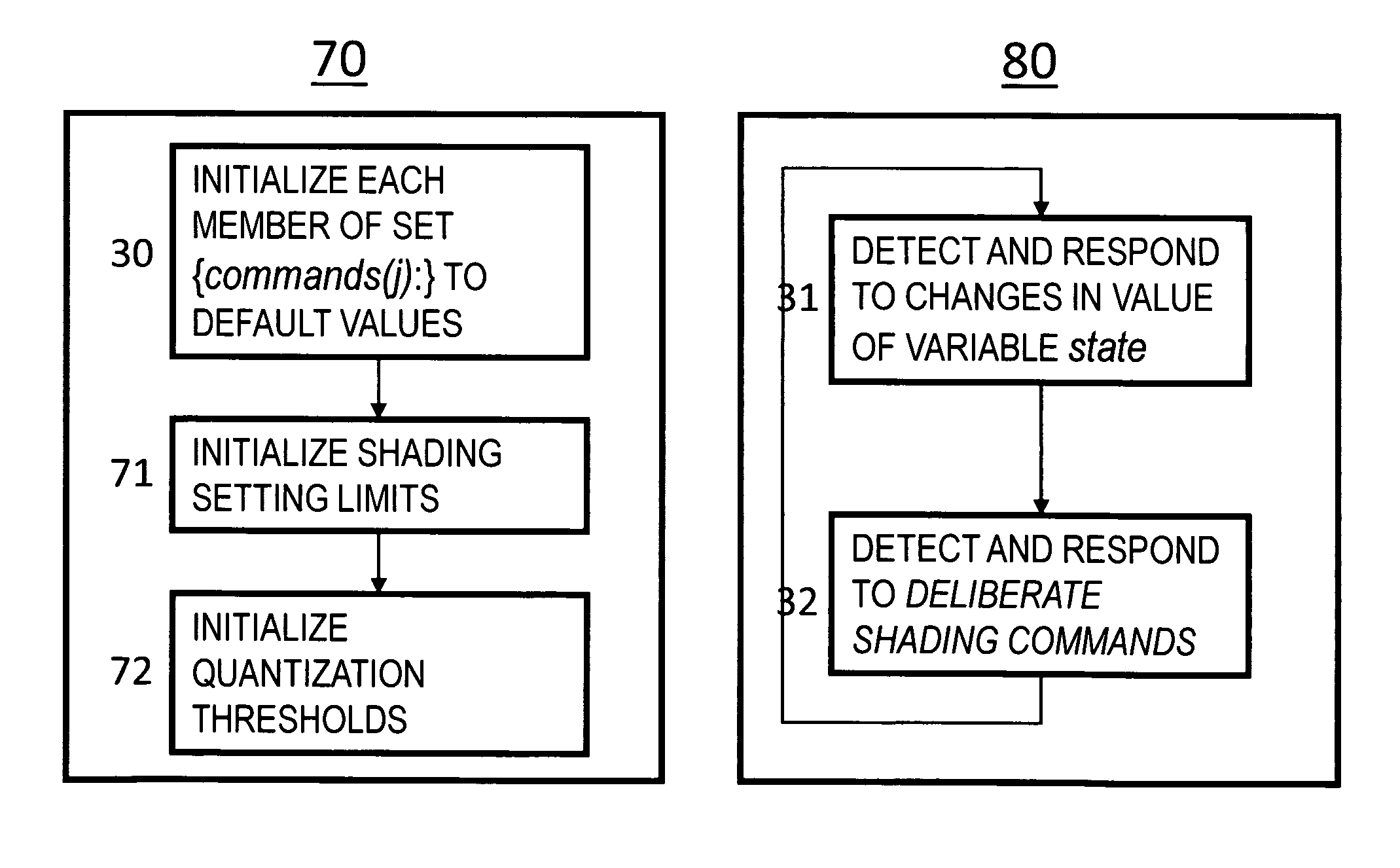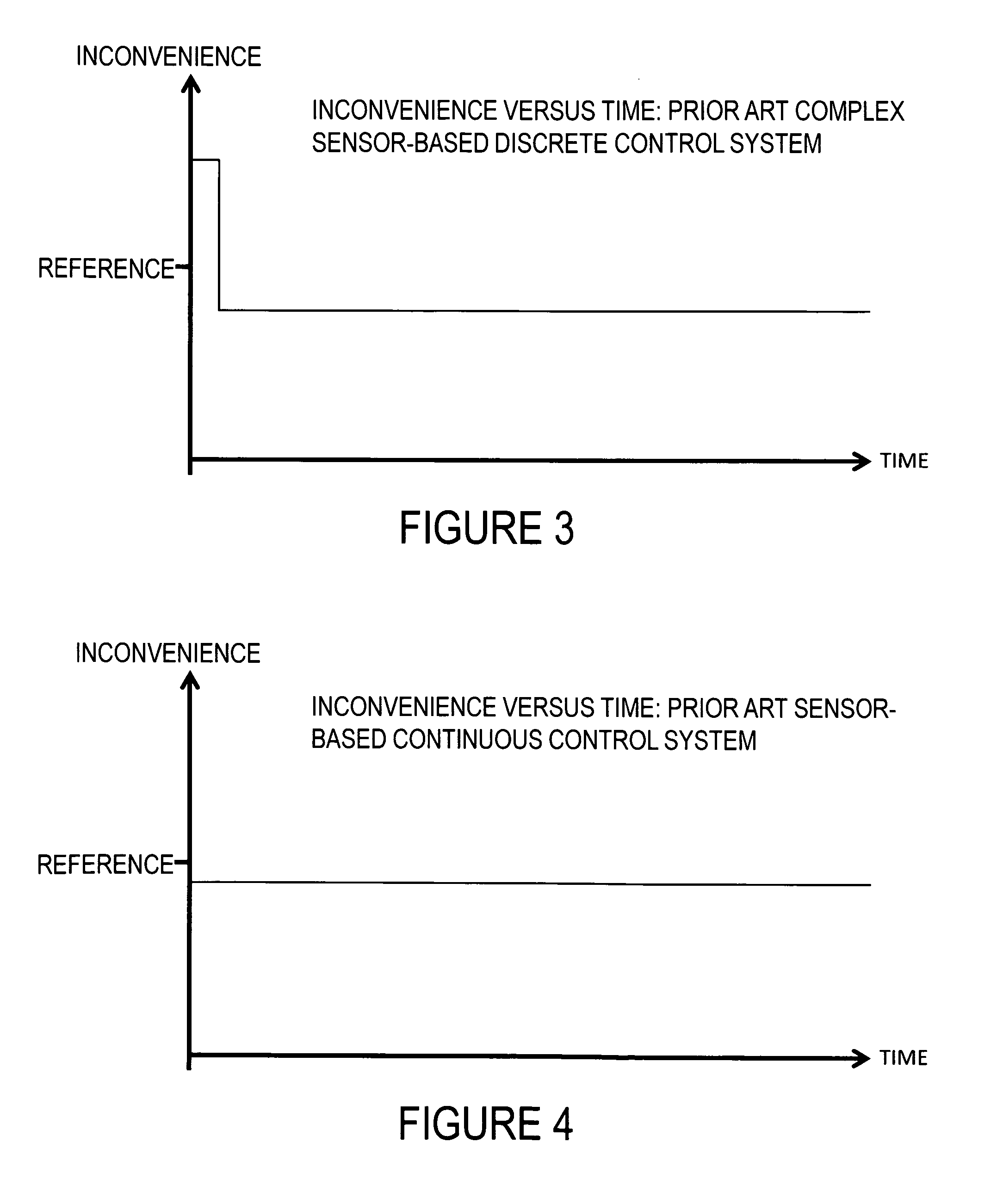State-based system for automated shading
- Summary
- Abstract
- Description
- Claims
- Application Information
AI Technical Summary
Benefits of technology
Problems solved by technology
Method used
Image
Examples
Embodiment Construction
Principle of Operation
[0160]Detailed descriptions of preferred and alternative embodiments of my invention are provided in subsequent sections of this disclosure. This section provides a general description of my invention to facilitate understanding of its principle of operation, and notes the key considerations for its effective implementation.
FIG. 6: Functional Block Diagram of System 20
[0161]FIG. 6 shows a functional hardware block diagram of a general embodiment of automated shading system 20 according to my invention. System 20 includes four functional elements: an electronically controlled shading device 21, sensing means 22, a user input interface 23, and a control element 24. Of course, practitioners in the art will recognize that a source of electrical power, such as a battery or AC-operated power supply, will also be present in embodiments of system 20; such a conventional power source is implied in FIG. 6, but omitted for the sake of clarity and simplicity.
Shading Device...
PUM
 Login to View More
Login to View More Abstract
Description
Claims
Application Information
 Login to View More
Login to View More - Generate Ideas
- Intellectual Property
- Life Sciences
- Materials
- Tech Scout
- Unparalleled Data Quality
- Higher Quality Content
- 60% Fewer Hallucinations
Browse by: Latest US Patents, China's latest patents, Technical Efficacy Thesaurus, Application Domain, Technology Topic, Popular Technical Reports.
© 2025 PatSnap. All rights reserved.Legal|Privacy policy|Modern Slavery Act Transparency Statement|Sitemap|About US| Contact US: help@patsnap.com



